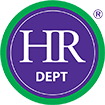
But even when the consequences are not as severe, they can still have a major detrimental impact on your business: from reputational damage to prosecution, wasted produce to food poisoning.
If your business is in the catering and hospitality sector or one of the many food manufacturing sub sectors, there is a plethora of health and safety and separately food safety/hygiene, issues with which to contend. But today, we are going to explore food hygiene in particular.
Who regulates food hygiene?
The Food Safety Act 1990 provides the framework for food legislation in Great Britain. It creates offences in relation to safety, quality and labelling. The Food Safety and Hygiene (England) Regulations 2013 provides for enforcement, including penalties for certain provisions of regulation.
Food hygiene is regulated by the Food Standards Agency (FSA). Enforcement is carried out by local authority environmental health officers. All businesses which sell, cook, store, handle, prepare or distribute food need to be registered with their local authority – even distribution companies who may keep no food at their premises.
After your registration, your business will at some point be assessed and given a food hygiene rating from 0-5 (0 meaning urgent improvement is required and 5 meaning very good).
It’s likely that a food business will be shut down if it receives a 0 rating. And it should be possible for all businesses to achieve a 5 rating. Remember that a good or bad rating will affect how your customers perceive you. In Wales, it’s the law that food hygiene ratings are displayed in a prominent position. All food hygiene ratings are available for the public to see on the FSA website.
How do you manage food hygiene?
There is an FSA framework for managing food hygiene in your business. If you are well established, you will probably be familiar with it. The framework is called Hazard Analysis and Critical Control Point (HACCP). If you are a small business with uncomplicated food production techniques, there may be a simpler approach from the FSA which you can follow, which they call Safer Food, Better Business.
Back to HACCP, and this requires you to examine your business carefully to assess what food safety risks you have and how things could go wrong. You need to recognise where your critical control points are for removing or sufficiently reducing these risks. It is also necessary to plan for what to do if something goes wrong; have controls for ensuring your procedures are followed; and maintaining records to demonstrate your procedures are working.
What key areas should you be looking at in your food hygiene management?
Training – Relevant food hygiene training (including allergens) is a must. It can be acquired/delivered from relevant previous experience, self-study or training while working. Keep records of your training activities.
Traceability – You must keep detailed records of all suppliers and business customers up and down your supply chain: names, addresses, types and quantities of product, and dates of transaction and delivery. These will be checked in the event of safety problems with your food. Batch numbers, invoices and receipts will help too, though are not essential.
Suppliers – Choose reputable suppliers and check that they act in line with good practice.
Food additives – Use only approved additives (if relevant to you), and if approved for your purposes. Additives which come under the food allergens list must be segregated from all other foods in the food preparation areas (see below).
Food allergens – As the tragic Pret cases show, food allergens must be accorded the upmost importance. Make sure you are managing them sufficiently in the kitchen and provide correct and sufficient allergen information to purchasers and consumers.
Food packaging and labelling – There are legal requirements for food packaging and labelling so make sure you are following the appropriate laws.
Food hygiene – This is at the heart of everything we have talked about so far. Consider the 4Cs of food hygiene: Cleaning, Cooking, Chilling and Cross-contamination. Acting properly in these four areas will help you avoid most problems you could encounter with food safety.
Need help with managing food hygiene in your business?
So, that’s a brief look at what a food hygiene management system could look like and the areas you will want to cover.
Human error can be a major risk and no-one is saying that it’s easy. Often, sectors that deal with food have busy and at times stressful workplaces which will put the most robust systems to the test. So you need to be as thorough and diligent as possible.
For every business, maintaining food hygiene at high standards is an ongoing challenge. So whether you’re just starting out, or are an established business, enlisting some professional help will help you get the systems in place to meet this challenge. Talk to our health and safety experts today to see how they can help you.

